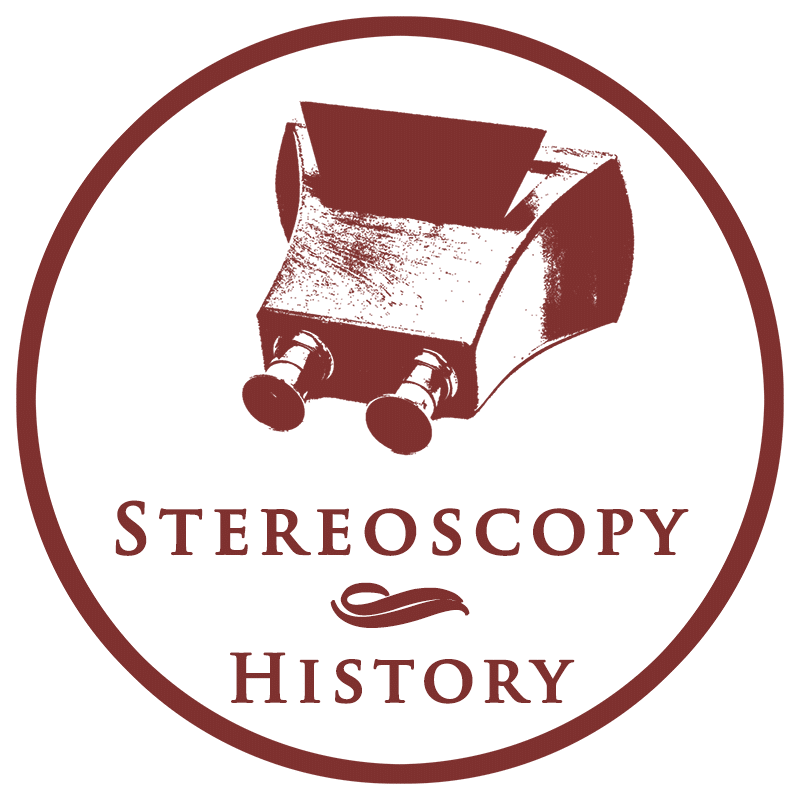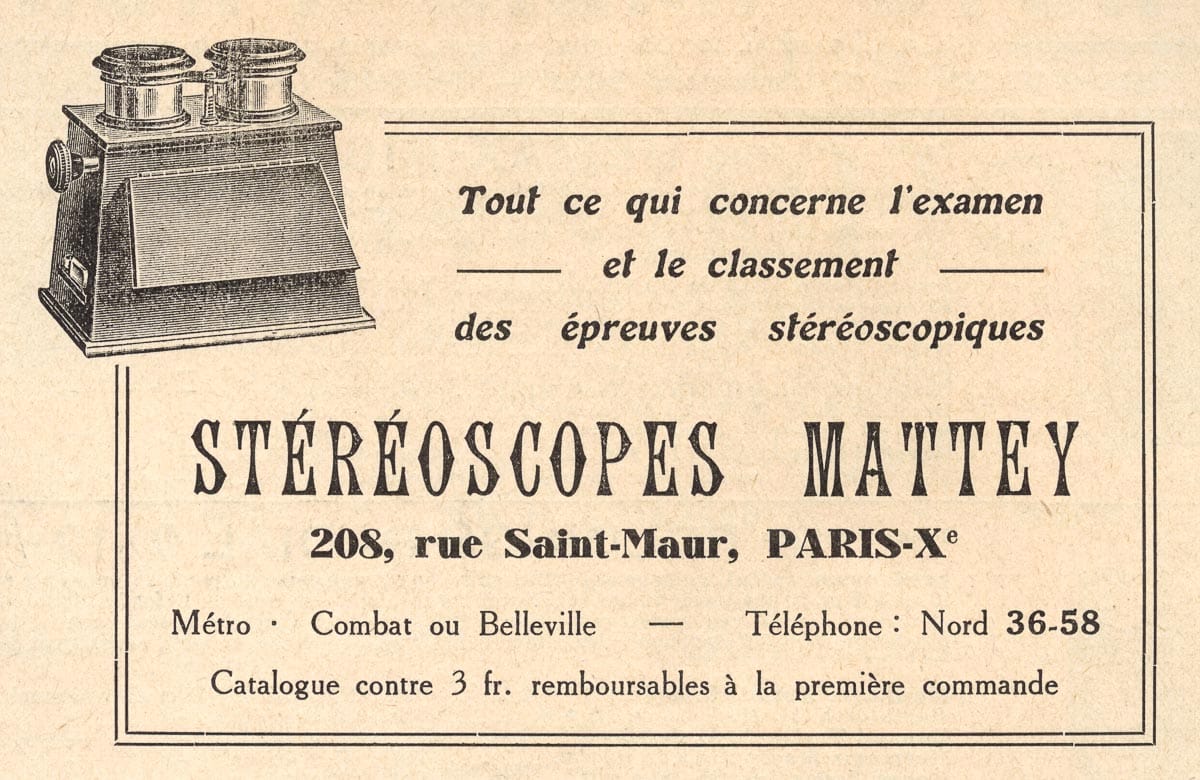
Mattey was one of the leading stereoscope manufacturers in France. The company offered the widest range of stereoscopes of all manufacturers. Their portfolio ranged from simple hand-held viewers to advanced multi-view devices. Mattey’s major competitors, Jules Richard and Léon Gaumont, manufactured both stereoscopes and stereo cameras, but Mattey only focused on stereoscopes and other viewing devices for photos, autochromes and postcards. The company also supplied viewers to resellers who sold them using their own brands. The business-to-business market was probably more important to the firm than the consumer market. Many stereoscopes were sold unbranded but can be linked with certainty to the company because they appeared in Mattey’s catalogues. The exact influence and scope of the company on the stereoscopy business in the early 20th century in France and abroad remain largely unclear.
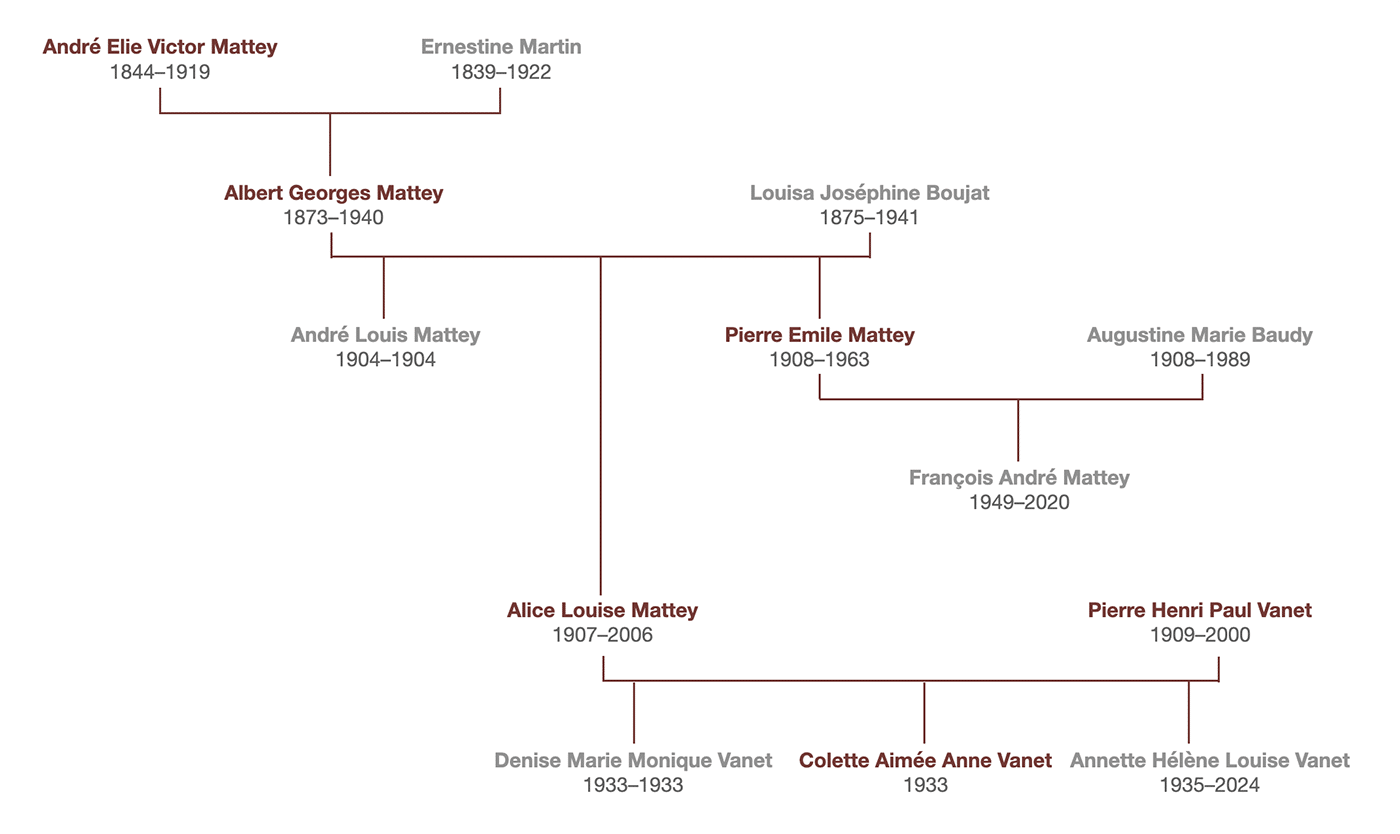
The Paris company was founded in 1872 by André Elie Victor Mattey. The firm did not start as a manufacturer of stereoscopes and was mentioned as an optical company in 18842. André’s son Albert Georges joined the company, and Société Mattey père et fils was established on 31 December 19023. The creation of the new company coincided with Mattey’s acquisition of stereoscope manufacturer Legendre in the same year4. Legendre was located at 8, Rue Pastourelle in Paris and he had a factory in the village of Amel, Meuse in northeast France. Legendre had acquired stereoscope manufacturer Wytenhove in 1898. The Auguste Wytenhove 1894–1895 catalogue shows a large number of stereoscopes and other viewers5. This catalogue is therefore important to understand the wide range of stereoscopes that later appeared in the catalogues of Mattey. With the acquisition of Legendre, Mattey bought a stereoscope range, a factory and market share. The factory in Amel was probably a woodworking facility and was still mentioned on an invoice from 1935.
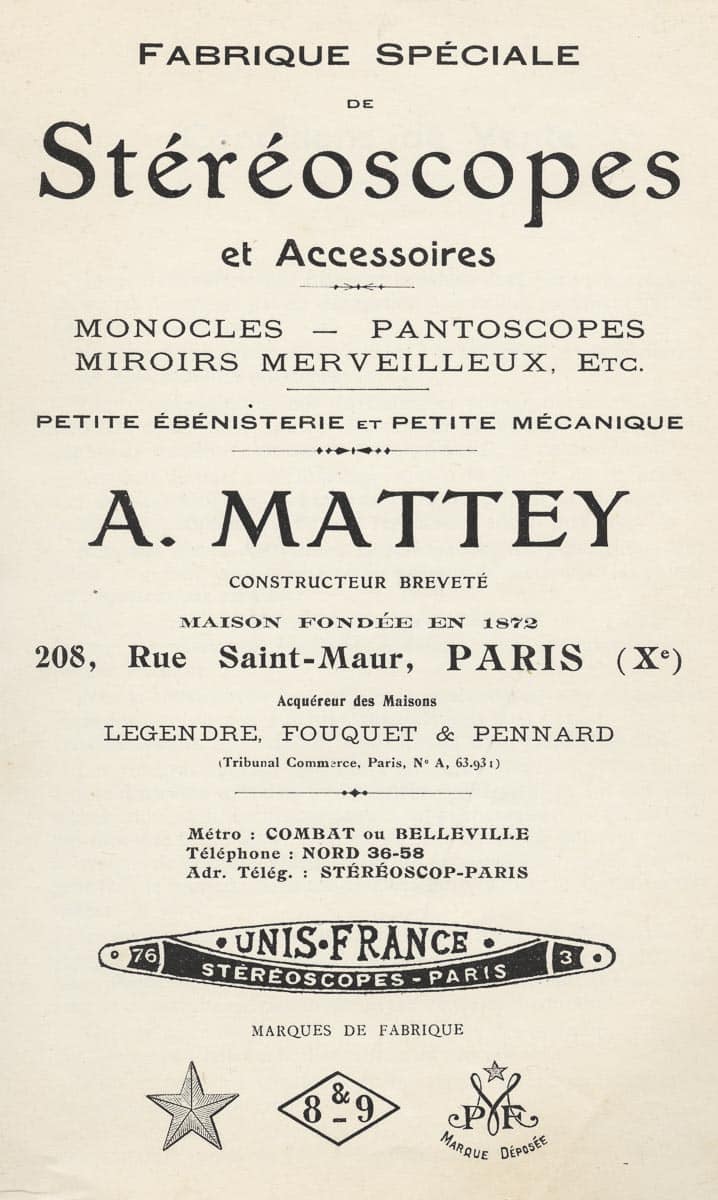
Mattey was located at 119, Rue Saint-Maur and at 8, Rue Pastourelle (former location of Legendre). The company moved to 208, Rue Saint-Maur in 19066. They would stay there for more than 30 years. New company acquisitions followed through the years. Fouquet7 and Laurent8 were acquired in 1908 and Pennard in 19119. These later acquisitions were probably mainly intended to increase market share. The acquired companies Legendre, Pennard and Fouquet were renowned, and Mattey referred to the predecessors in his catalogues. The newly created brand Pennard & Fouquet was used by Mattey for their more exclusive products. The company used two other brands, 8&9 and the brand with a star logo. Mattey was also granted to use the Unis France trademark. Unis France was a collective trademark to guarantee the French origin of high-quality products, made by different companies. Many Mattey stereoscopes were branded Unis France through the years.
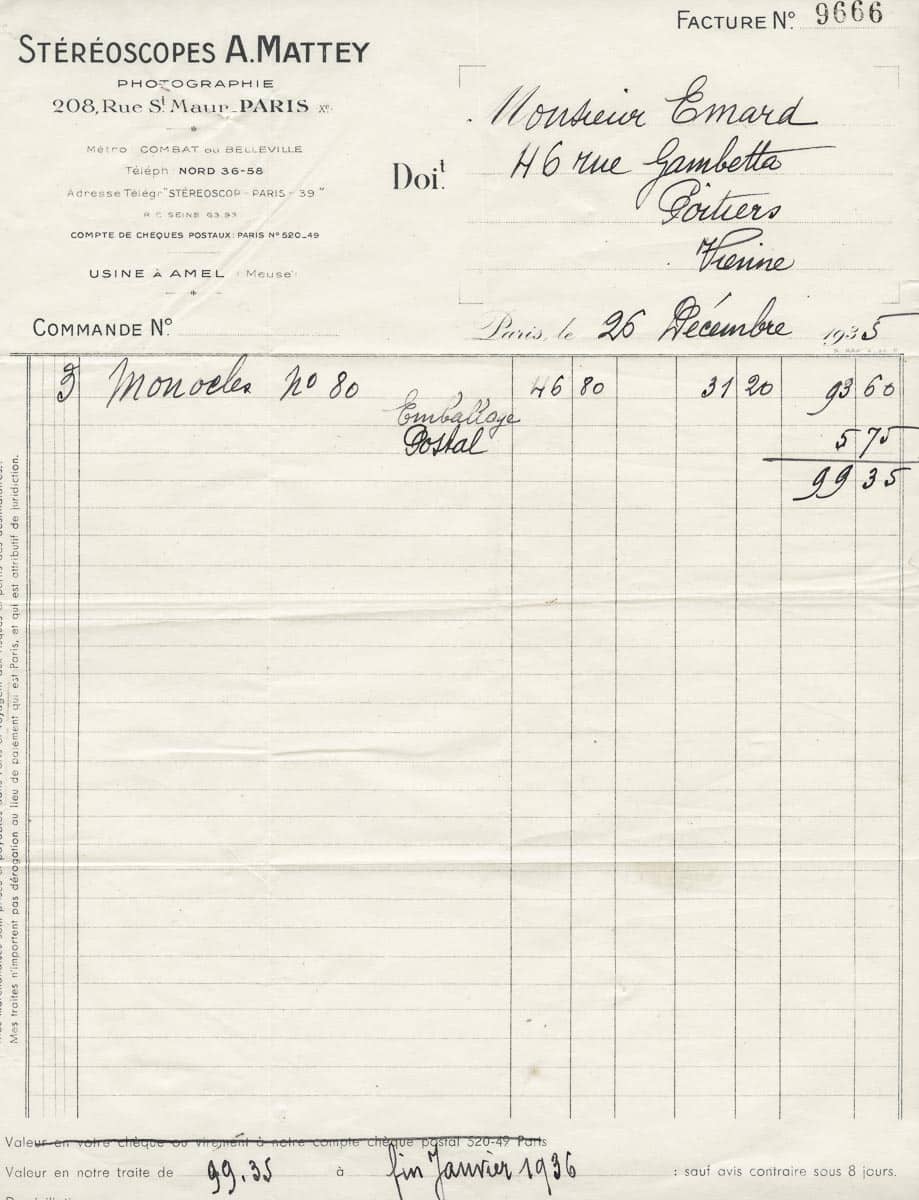
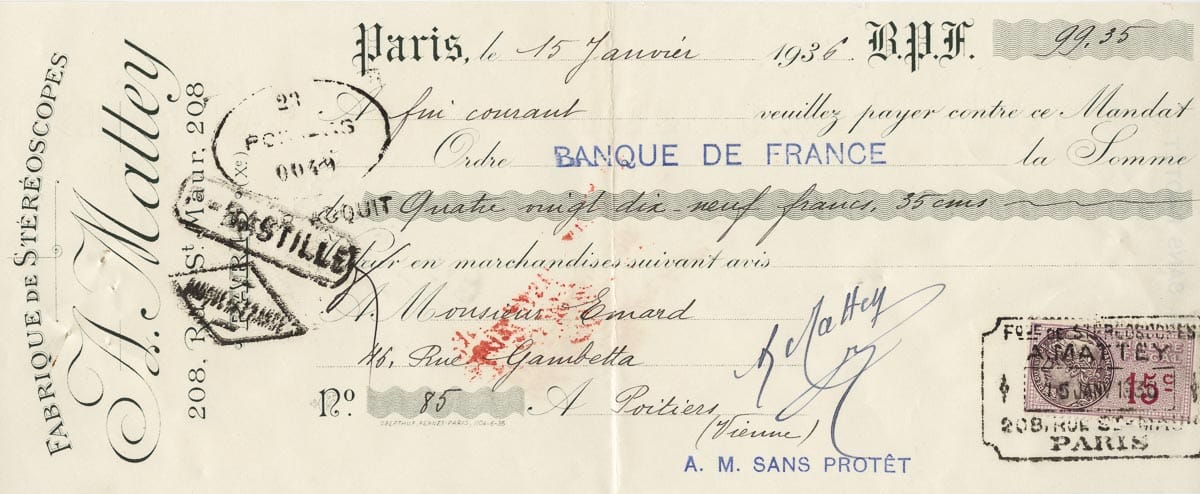
The cheque belongs to the invoice.
Société Mattey père et fils was dissolved on 1 January 191210, and the company was continued by Albert Georges as Stéréoscopes A. Mattey. The company moved to 15, Rue Clavel in 193711. Albert Georges was seriously injured in the Second World War while fleeing during the invasion of France in 1940. He died in a hospital in Bourges on 15 July 194012. In his obituary, he was characterised as follows13:
Hard worker, loyal man, clever tradesman, Mr. Mattey had acquired a dominant position in the industry of stereoscopic devices, whose outlets were extremely important in the past.
After the war, the company restarted on 1 January 1947 as Société des Anciens Établissements A. Mattey14. The company was founded by the descendants of Albert Georges, Alice Mattey and Pierre Mattey, and René André Sanner. The company was managed by Pierre Mattey and Pierre Vanet (Alice’s husband). From 1956, they continued as A. Mattey S.A. (Société Anonyme)15.
Interest in stereoscopy waned and the company went through a transition. It gradually focused on manufacturing exclusive wooden humidors for cigars. The minutes of a company meeting show that Alice Mattey and her daughter Colette Vanet-Lanquetin were still involved in the company in 199316. The firm closed its doors on 9 June 199917. This ended the more than 125-year history of the company that left a major mark on the stereoscope market at the beginning of the 20th century.
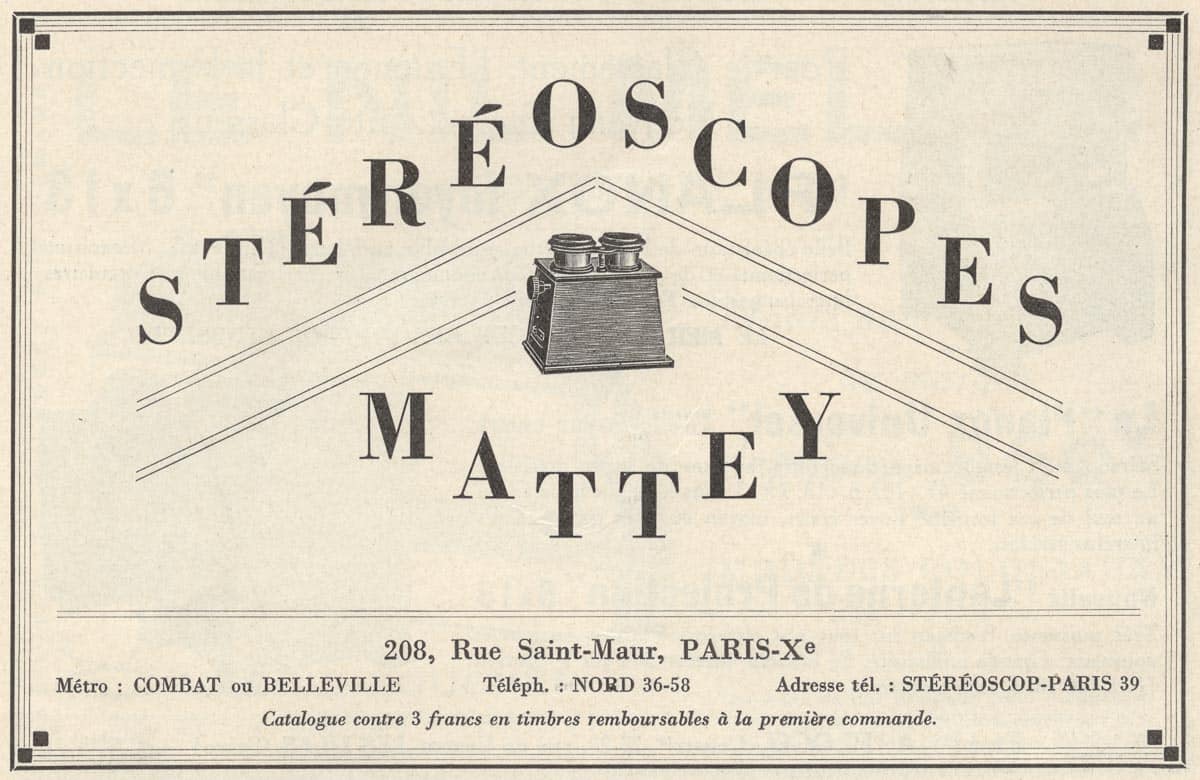
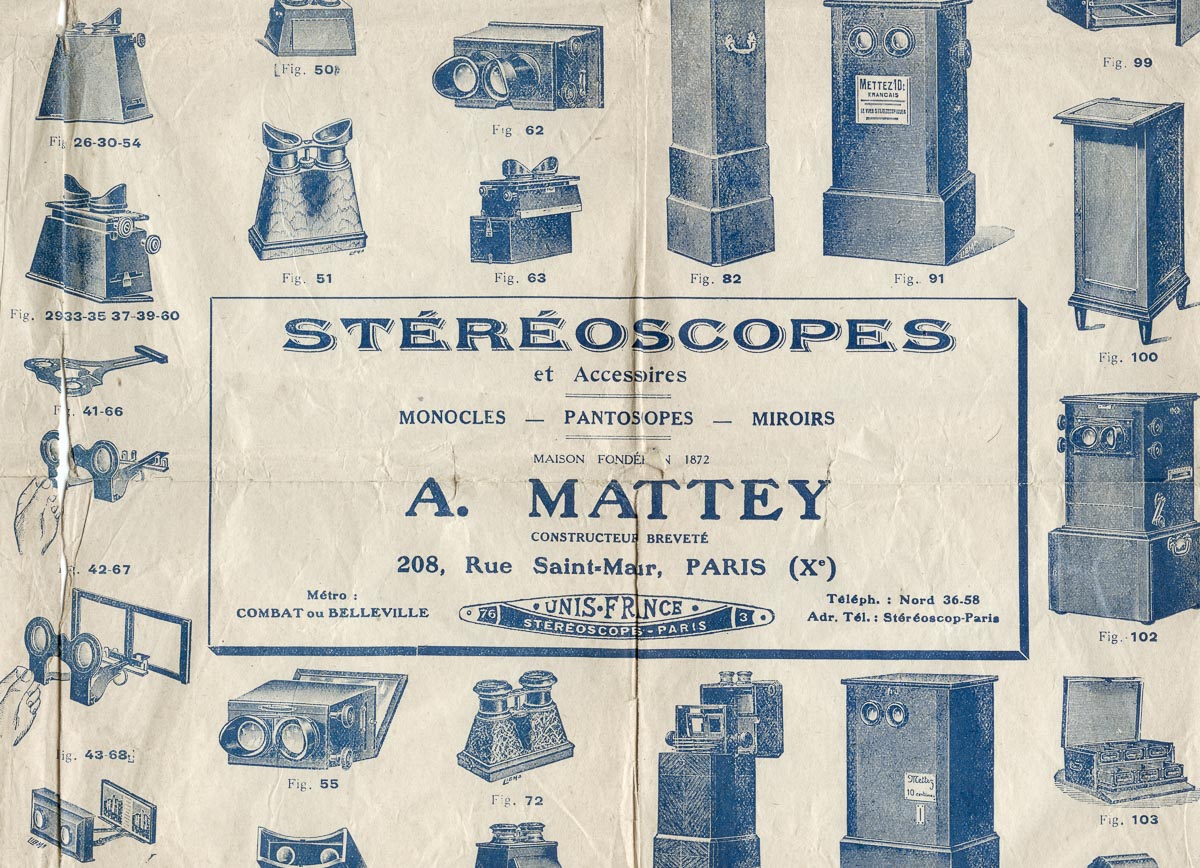
References
- Barbe, C. Généalogie de Albert Georges Mattey. Via: gw.geneanet.org ↩︎
- Société de protection des apprentis et des enfants employés dans les manufactures (1884), p. 299. Via: gallica.bnf.fr ↩︎
- L’Information photographique (1902), p. 80. Via: gallica.bnf.fr ↩︎
- L’Information photographique (1902), p. 47. Via: gallica.bnf.fr ↩︎
- Wytenhove, A (1894) Stéréoscopes – Monocles et Pantoscopes. Via: cnum.cnam.fr ↩︎
- L’Information photographique (1906), p. 309. Via: gallica.bnf.fr ↩︎
- Archives commerciales de la France (1908), p. 1317. Via: gallica.bnf.fr ↩︎
- Archives commerciales de la France (1908), p. 587. Via: gallica.bnf.fr ↩︎
- Archives commerciales de la France (1911), p. 189. Via: gallica.bnf.fr ↩︎
- Archives commerciales de la France (1912), p. 539. Via: gallica.bnf.fr ↩︎
- La Revue française de photographie et de cinématographie (01-06-1937). Via: gallica.bnf.fr ↩︎
- Science et industries photographiques (01-08-1940), p. 232. Via: gallica.bnf.fr ↩︎
- Le Photographe : organe des photographes professionnels (1940), p. 5. Via: gallica.bnf.fr ↩︎
- Les Annonces de la Seine : journal officiel d’annonces judiciaires et légales (1946), p. 2784. Via: gallica.bnf.fr ↩︎
- A. Mattey S.A – Identité de l’enterprise. Via: societe.com ↩︎
- A. Mattey S.A. (1993) Séance du 24 Juin 1993. ↩︎
- A. Mattey S.A – Identité de l’enterprise. Via: societe.com ↩︎
